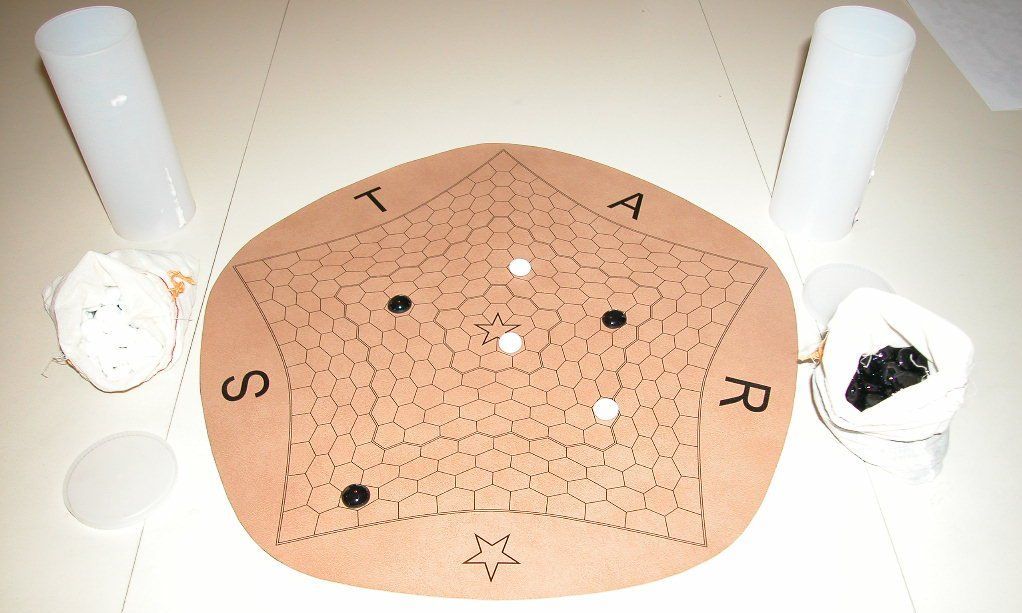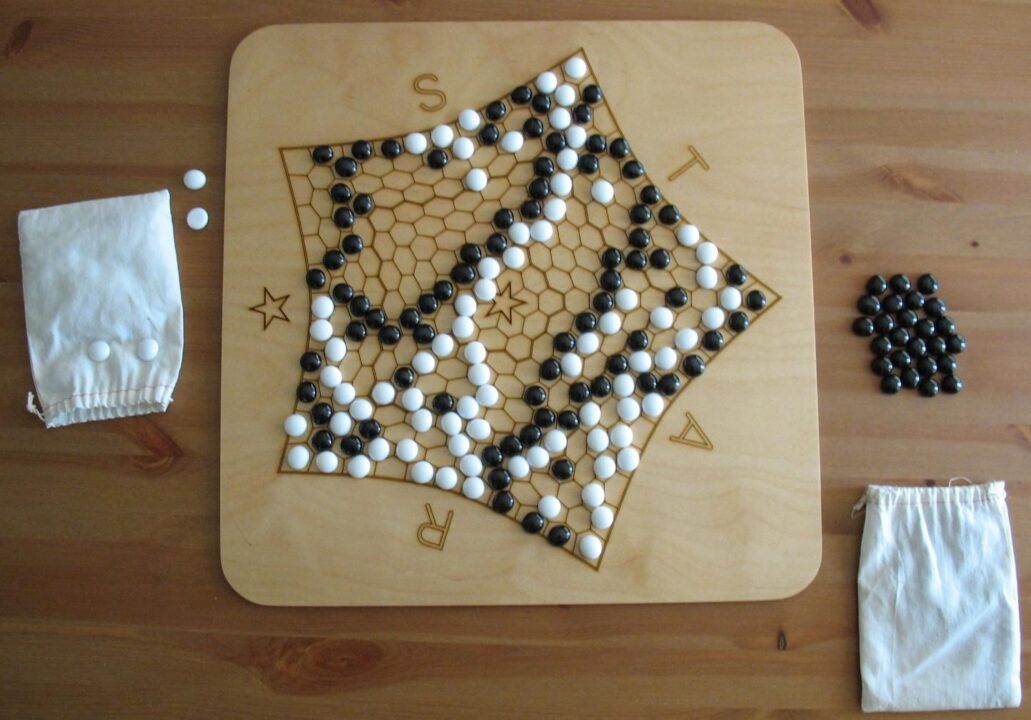How It Plays
Setting up
Put the board in the middle of your table (or the floor, if you’re a savage). Hand out player pieces and cards to everyone. Shuffle the deck, make a draw pile, and if you find any leftover snack crumbs in the box, that’s bonus flavor. Place tokens where the rulebook tells you and argue about who goes first.
Gameplay
Each player takes a turn by playing a card, moving their piece, or using a power. Turns go clockwise, unless someone tries to sneak in a bonus move (watch them closely). Gameplay mixes a bit of strategy with a dash of luck. You can block your friends or help yourself, but you’ll spend most of your turn plotting revenge for what just happened to you. Players keep drawing, playing, and moving until someone nears the win condition.
Winning the game
First player to collect the set of *star tokens—or hit the goal on the board—wins. If you get there through pure skill, well done! If it was luck, just pretend it was all part of your plan. Everyone else complains, reshuffles, and demands a rematch.
Want to know more? Read our extensive strategy guide for *Star.
Game Mechanics and Balance: Does *star Shine Bright or Flicker Out?
Let me tell you, when I first set up *star on my table, I felt a buzz. Is it the caffeine or the promise of a well-balanced game? Turns out, a bit of both. *star has a clean set of mechanics: players take turns drafting cards, planning moves, and scoring points with satisfying combos. This sounds simple, but there’s some crunchy strategy hiding under the sparkly cover.
The best part? The rules don’t get in the way. When my friend Greg (a notorious rule-bender) tried to find some sneaky loophole, he failed. That’s a good sign. The game avoids “runaway leader” problems too. If you fall behind, you can still claw your way back with smart plays. One time, my cousin Lucy was in last place for most of the game. She managed a glorious comeback that had us clapping (and then suspiciously checking the rulebook, just in case).
I do have to dock a few points for the luck factor in the card draws. Sometimes you get the perfect card at the perfect time, and sometimes you sit there wishing on a *star for some help. It isn’t a pure strategy game – there’s luck, but it doesn’t steamroll skill. I’d say *star gets it mostly right, but if you hate randomness with a passion, bring your own lucky rabbit’s foot.
Next up: we’ll talk about how *star makes you laugh, groan, and occasionally question your friendships with its spicy player interaction.

Player Interaction and Engagement in *star
Let me tell you, nothing brings out the true colors of your so-called friends like a heated game of *star. The first thing that hit me was how much you need to keep an eye on everyone else at the table. Unlike some games where you just stare at your own little world (cough, solitaire-lovers, cough), *star throws you straight into the mix. You have to read everyone’s moves like a detective reading a suspect: Are they bluffing? Scheming? Or just making wild guesses like my cousin Vinny?
I found myself talking, plotting, and sometimes straight-up groaning (sorry, neighbors) as players blocked my best-laid plans with a move that was obviously meant to mess with me. There’s a bunch of direct and indirect interaction here—sometimes you’re helping someone, sometimes you’re shoving their spaceship straight out of orbit. One round, I tried to form an alliance, and about three turns later, I was betrayed faster than you can say “hyperdrive malfunction.” Which, by the way, led to a good bit of table laughing and mock outrage.
Everyone at my table, whether they won or lost, stayed attentive the whole time. The way turns move fast and the constant possibility of someone messing up your plan keeps things tense—in a good way. It’s not the kind of game anyone can snooze through, unless you consider pretending to be a space rock a valid strategy (no judgment if you do!).
Curious if *star will keep you coming back, or if it burns out faster than a cheap rocket? Buckle up, because next, I’ll talk about replay value and game length!
Why *star Shines Bright in Replay Value (and Never Outstays Its Welcome)
If you’re like me, you love a board game that keeps you coming back for more, even after your fourth cup of coffee. In this department, *star delivers! No two games feel the same, and that kept my gaming group from shuffling off to their phones after round one. With every session, we found some sneaky new tactic to try—or a wacky way to lose, if you’re me.
What helps *star’s replay value is its ever-changing mix of goals and player strategies. The game offers a variety of paths to victory, and you’ll want to try every single one. We played all evening, and not once did I feel like I was just repeating the same moves. That’s rare! But there’s more: *star scales well with different player counts, so it fit right in whether we had a full house or just three of us arguing over rules. (Spoiler: The rulebook is solid, but my friends are not.)
On game length, *star finds a sweet spot. It takes about 45 minutes to an hour, depending on your group’s love of banter and debating whose turn it is. For me, that’s perfect—not too short, not too long. You won’t be checking your watch, unless you’re timing how long your buddy takes to decide. There’s none of that ‘will this ever end?’ feeling that haunts some marathon board games.
Next up, I’ll chat about *star’s component quality and art style—because who doesn’t want to know if a board game looks good enough to eat?
How Do the Components and Art Style Shine in *star?
Right, let’s talk about how *star looks and feels on the table—because trust me, this makes a difference! The box alone is so shiny I nearly blinded myself opening it under my kitchen light. The components feel solid in your hands—not the cheap, bendy kind that makes you wonder if your cat will eat them. Apparently, some of my friends felt compelled to sniff the cards (don’t ask), and the feedback was “smells like quality cardboard.”
The tokens are chunky and nicely detailed. I caught my friend Lucy pretending one was a cookie, so if you’ve got kids, consider yourself warned. The game board itself is clear, colorful, and easy to read—no squinting or arguing about what’s what, even after two glasses of wine.
The art style of *star leans towards whimsical, yet it never feels childish. It’s got a playful vibe that says, “Hey, we’re here to have fun, not kill each other over rules.” Every card has its own illustration, so you won’t get bored staring at identical doodles. Personally, I think the graphic designer deserves a medal. Or at least a hug.
Do I recommend *star based on its components and art? Absolutely! If you like games that look sharp and don’t fall apart after one play, this one’s worth a spot on your shelf. Your eyeballs and your table will thank you.
Conclusion
*star really hits the sweet spot for me. It’s easy to set up, keeps everyone involved, and the artwork alone deserves a tiny round of applause. I had a blast messing with my friends and pretending I had a strategy (spoiler: I did not). While the luck factor might make some control freaks twitch, I never felt like the game was unfair or left me hopeless. With solid components and loads of replay value, I think *star fits both casual nights and gamers who like a touch of silliness. That wraps up my review—if you want a game that’s fun, fair, and good-looking, *star is a star in my book!


